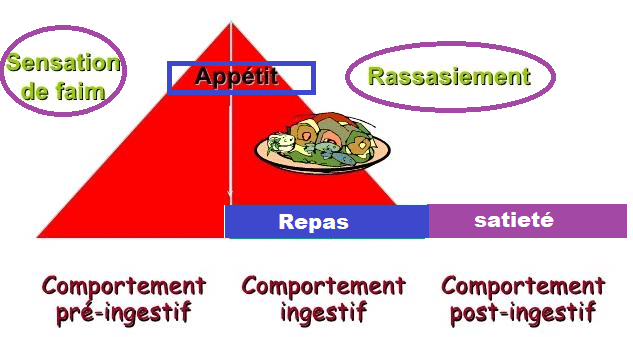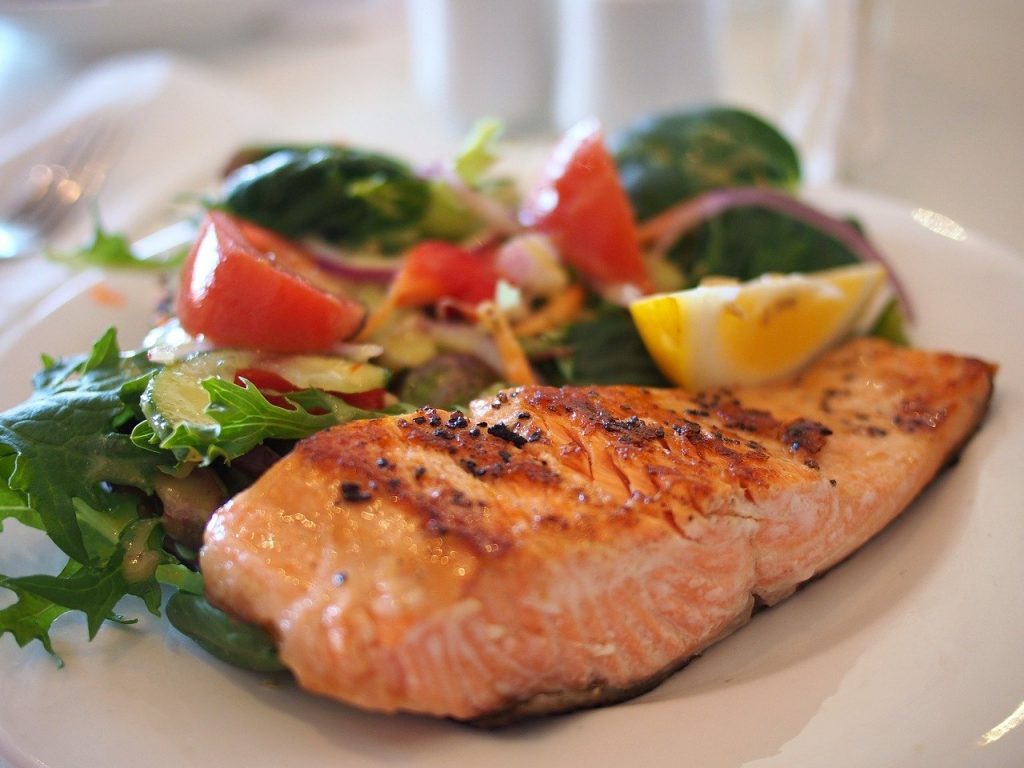[Article updated on 19/09/2023]
To properly adjust your nutritional intake to your needs, it is important to know how to listen to your food sensations, which are the signals that your body sends you (hunger, desire, fullness, satiety), in order to better meet its needs, both physiological and psychological.
The restrictions, the constraints of your living and working environment, your history, your emotions, disrupt these signals.
We we no longer know how to identify our eating sensations and cannot therefore misinterpret them and therefore have difficulty adjusting our contributions to our needs, hence the possible appearance of excess weight!
To achieve your slimming goal, you will therefore have to relearn how to listen to your eating sensations in order to find the pace that suits you, For slim down, without constraint or frustration.
How to navigate your food sensations?
We are guided by 4 food perceptions which must allow us to adjust what we eat to our real needs physiological but also psychological.
The first is hunger which results in a feeling of emptiness in the stomach, with low energy, dizziness and irritability for no reason.
The human body is like a car that we must “refuel” when we are on “reserve”. If you eat without feeling hungry, it’s like refilling with gasoline while the tank is still full… The body will have to put the surplus in reserve in the form of fat.
When we do not feel this sensation, or on the contrary, when we have the impression of feeling it constantly, it is because our perception of hunger is disturbed.
It’s necessary rlearn to recognize it by doing the hunger test, in order to rediscover its manifestations and take them into account. Click here and let yourself be guided: http://vitadiet.net/pdf/test-faim.pdf
The second is desire which corresponds to a desire of unknown origin, without physiological need. It can also hide a deeper emotion.

He There are two types of desire:
- sensory : you salivate at the sight or smell of hot, golden bread just out of the oven. Enjoy it, no need to get frustrated! Enjoy a small piece, taking your time, every time you really want it. This will avoid the frustration that often causes food breakdowns!
- emotional (or food impulse) : it acts as a defense mechanism against uncontrollable emotions (anger, joy, sadness, etc.) and pushes you to eat without hunger in order to try to comfort yourself and try to fill an emotional gap.
For regain healthy eating behavior, we must learn to answer in a way adapted to these desires, instead of reacting to them.
If you tend to soothe your emotions with food, start by having a drink.
Then take the time to ask yourself about the physical (tired, stressed, bored, etc.) and emotional (angry, happy, sad, etc.) state you were in. Then identify the source of his impulses, by writing down in a notebook your feelings at the moment when you want to eat without hunger. Finally, think about what emotion you were trying to respond to and list all the activities that allow you to find the same response but without eating.
For example :
- You are angry => craving chocolate => need to vent anger
=> other possible answers: kick a cushion, shout in an appropriate place, put on your sneakers and go for a few minutes of running hard to let off steam and get the anger out… - You are tired => Have a little coffee, take a break or a nap…
- You’re bored => Pick up a good book, call a friend, do some embroidery, go out for a walk or watch a good movie…
- You are stressed => Listen to Zen music, take a hot bath, do some relaxation, drink a soothing herbal tea with orange blossom and lavender…
A persistent craving for a food can also mean that the body is lacking a specific nutrient, present in that particular food (and perceived by biological mechanisms).
For example: craving for chocolate = need for magnesium; banana craving = need for potassium and magnesium
Gradually, you will stop stifling the emotion that is overwhelming you and you will face it, without running away from it. You will gain inner autonomy and put food in its rightful place: a pleasure and not a shield.
He It is essential to differentiate between the two types of hungry in order to eat right.
The third is the satiation that we feel when we reach the end of taste satisfaction: the food seems less good. Naturally the taste of your food does not change during the meal, but it is you who receive messages from your hypothalamus, as you absorb the different nutrients that pass into the blood. The more you nourish your body with quality foods that meet your needs, the less attraction you will feel for what you eat.

The two types of satisfaction to recognize
– Taste satisfaction, it is the disappearance of taste pleasure for a type of food: we no longer want beans, but we can still be “hungry” for the county!
To notice this, it is necessary to start the meal when you are hungry, to concentrate on your taste sensations and on the satisfaction caused by the food.
– Overall satisfactionis the end of all pleasure in eating.
At this point, you’ve had enough fun and your stomach is full and distended.
You should feel a feeling of fullness (but not discomfort).
The last of the sensations to recognize is the satiety which corresponds to the disappearance of taste pleasure and hunger. It is leptin, a digestive hormone, which regulates the feeling of satiety, in addition to promoting the absorption of nutrients.
This has nothing to do with the volume the food occupies in the stomach, it is rather determined based on the calories ingested. Concretely, food no longer brings you taste pleasure, you eat more slowly: It is time to finish the meal. Stop eating before you are full, you will be better off!
Above all, don’t force yourself to finish your plate but rather learn to serve yourself a little less and refill if necessary. If you feel heavy when you leave the table, it’s because you’ve exceeded your hunger. Don’t panic: just wait until your stomach is in your heels again to eat, even if it means skipping the next meal.
To find your satiation threshold more easily, eat at a set time!
Resume control and listen to your eating sensations!
For that, eat only when you are hungry and not because you want to eat ! If you’re not hungry, don’t force yourself: don’t be afraid to skip or postpone a meal! Bring a small snack (dairy, fruit, bread+butter+jam or a small cheese-ham-salad sandwich) to last you until the meal.
If your meal is at least an hour away and you are hungry, have a snack, this will allow you to wait calmly and then eat your fill at the next meal. Everyone has their own pace, find yours!
Take time to eat!
To adjust your input to your sensations, you must be attentive to them. Sit comfortably, take a break, take a deep breath. Take at least twenty minutes for each meal as this is the minimum chewing time before the stomach starts sending signals of fullness.
Listen to yourself: by eating while seated, without doing any other activity (radio, screens, telephone, etc.) because they monopolize your attention, prevent your body from counting your intake and for you to hear the signal of satiety.

Eat mindfully: dtaste each food with your five senses!
- the view: at least 3 colors on your plate!
- smells: anticipate the flavors to come.
- taste: use your taste buds, analyze the texture, flavors (sour, salty, sweet, bitter).
- touch: touch the crust of the bread, the skin of the peach…
Eat with pleasure, without restrictions, but in moderation. You will vary the sources of satisfaction and will be satisfied more quickly.
In summary
Here is what you can do every day to rediscover your eating sensations and take pleasure in nourishing yourself:
- Be kind and attentive: don’t start the day planning to restrict yourself.
- Wait until you’re hungry to eat, or if you don’t have a choice about when you eat, just eat when you’re hungry!
- Dedicate yourself only to your meal (no screens or other distractions)!
- Take the time, eat mindfully and connect to your body and your sensations!
- If it cracks, don’t blame yourself and enjoy every mouthful. You will wait until you are hungry again to eat!
- Then take the time to analyze the situation (trigger(s), current response, emotions felt, responses that could be possible).
Also find my video content:
HAS you, now to train yourself to recognize and take into account count your food sensations!
